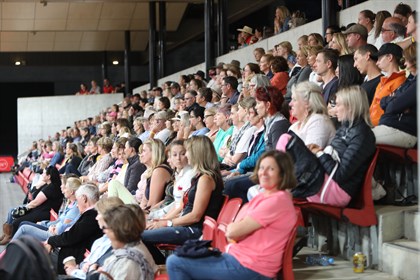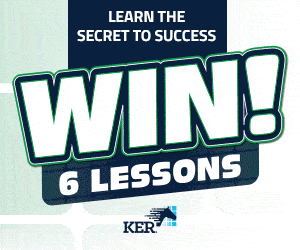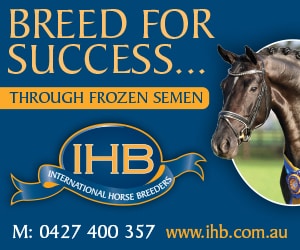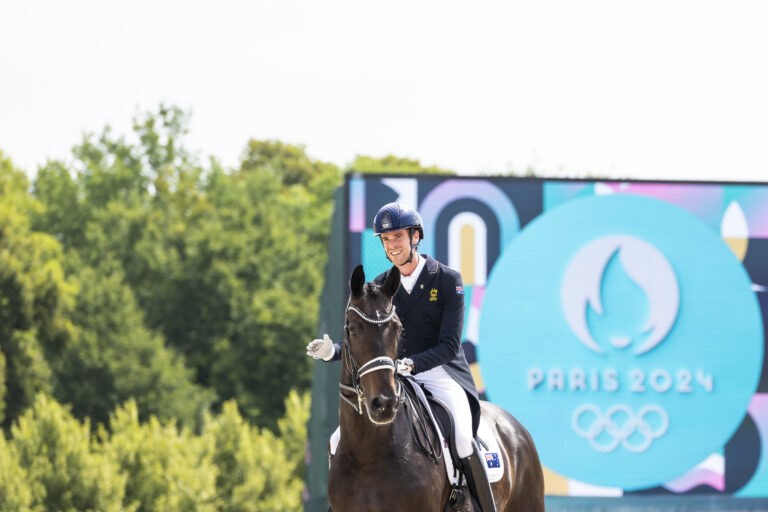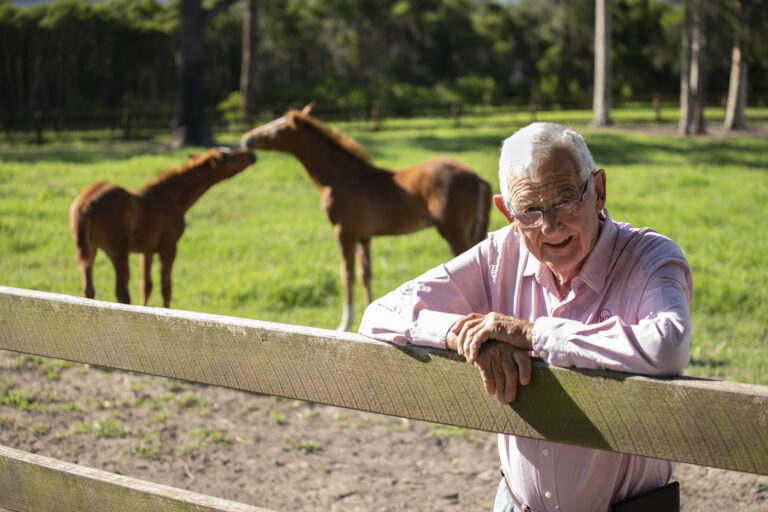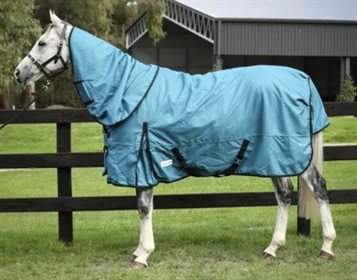A large crowd gathered at Willinga Park for the Dorothee Schneider Masterclass
© Roger Fitzhardinge
By Roger Fitzhardinge
Willinga Park was honoured to have the pleasure of Dorothee Schneider, German dressage superstar and Olympic gold medalist, conducting a masterclass. Dorothee is currently ranked number 2 rider in the world and was a member of the gold medal winning teams at the Olympics in Rio and World Equestrian Games in Tyron, and a member of the silver medal winning German team at the London Olympics. However Dorothee isn’t just a Grand Prix rider, she is also one of the very best at showing young horses – competing many horse at the Bundeschampionate and at the World Young Horse finals. When it comes to Grand Prix horses the wonderful Showtime and Sammy Davis Jnr spring to mind, and then Diva Royal. Dorothee also worked with Sezuan and many many champions, too numerous to mention. She is simply outstanding.
After a brief introduction Dorothee gave an overview of her training approach, and it was in beginning to get the horses to have confidence and be balanced, and always to be ready to stretch over the back to the bit. Dorothee also emphasised the fact that horses need praise so they get confident and learn to enjoy work and look to work. It’s all about teaching them to use their bodies.
Robbie McKinnon was the first rider with the 4 year old Fleur De Lys, by Floriscount x Sunny Boy Mare Hirtenqueen. “With the horses it’s important to realise that the horse must be straight and to work the hollow side just as much as the stiff side. Never cross the hand/reins across the neck. It’s always important to keep the hind legs following the line.” As Dorothee explained, the stiff (strong) side is always important to encourage suppleness, and ensure the power of both hind legs working straight and in balance with good attention to the outside rein.
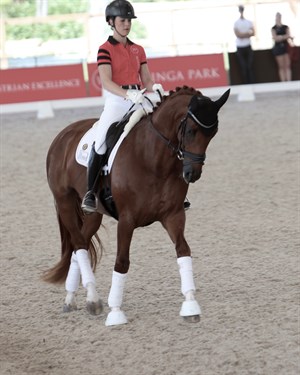
Robbie McKinnon and 4 year old Fleur de Lys
© Roger Fitzhardinge
The trot to canter transitions needed to be positive and well prepared, always keeping the young horses in canter positively forward. Dorothee insisted on thinking more about riding from the hip to the rein. When the horse gets too light in the rein, then widen the reins and forward to the bit. Always ride the horse’s hind legs into the reins and get the horse to make trot and walk transitions with attention to keeping the hindlegs active and under, and sharp to the rider’s leg. On the hollow side it’s important to think of the shoulder control and not letting the horse fall out and away from the line, and this is why you should ride on the inner track. It’s very important that the horse is forward to the rein – never let the horse come behind the leg, as then they have the opportunity not to listen and understand the preparation. On the hollow side it’s all important to keep the outside rein…. “keep her in front of you and directly forward into the canter, and if the horse is lazy, then it’s important to keep the horses sharp to the leg.”
Dorothee made many times the comment of keeping the horse FORWARD to the bridle. She commented often about the hollow side and the strong (stiff) side, and that it is important to manage both the sides, always with the intention of creating the straight horse. When inviting the stretching, Dorothee encouraged Robbie to keep her wrists mobile and then encourage the stretch.
Lewis Newton rode a chestnut gelding by Charmeur out of a Lancet mare. This horse was tense and green and Dorothee gave him plenty of time to settle. Lewis was asked to look to the ears and use this as a point of reference for the straightness, and to not allow the horse to come against the inside leg, and in rising trot, to take the hind leg with him. Lewis needed to ride the horse more forward and again stay on the inner track so as to always make sure he was riding the straightness – and when the side leg came to the inside, to then ride a little shoulder in. “If the horse gets tense then find a place on the arena where the horse is more mentally comfortable and then make the transitions”.

Lewis Newton rode a young Charmeur gelding in the Masterclass
© Roger Fitzhardinge
Lewis was also reminded about the straightness, especially in the downward transitions and then to make certain to be able to get him sharp and in front of the leg. In the stretching it’s always very important not to do this with a loose rein, and he must keep the contact and reach to the bridle so this will bring the back up.
“If the horse is tense then find an area on the arena where he becomes more relaxed and continue with the exercises.” In the downward transitions it is very important to always be aligning the straightness and to stabilise the shoulders on the line and then organise the hinglegs and engagement. Lewis was often reminded to follow with the hips and to establish the rhythm with the seat.
Edwina Hutton-Potts and the big brown gelding WPH Sachio by San Amour x Florestan/Donnerhall were next. This combination are competing at Medium level, however there was not a lot of difference between the way that the four year old and the medium horse were trained.
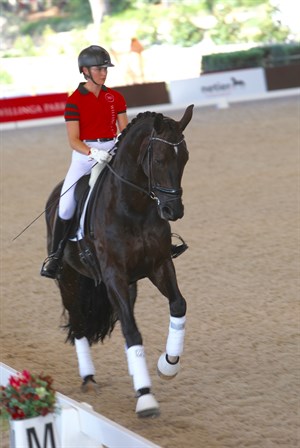
Edwina Hutton-Potts and WPH Sachio working on the basics
© Roger Fitzhardinge
“To help keep straight, think that you have the outside ear in line with the outside shoulder and keep the rhythm with the rider’s hips and always take it to the mouth.”
The leg yielding was used to encourage the flexion and the bending and always keep the inside leg to the outside rein. “Look forward to the point you want to ride and not at your horse’s neck. Always on the hollow side keep the outside shoulder first and then the inside hind leg in the correct place. Keep the inside hands a little up.” Transitions are very very important, and there must be many of them. Always stretching the horse to the bridle, and when having a break, stretch to the bit, not with looping reins, to make sure that the horse uses the neck in the walk. Take the rein a little to the side when he is behind the bit and encourage him to go to the bit. Before any transition firstly you must stabilise the rhythm. The shoulder in IS the outside shoulder in front of the inside hind. Counter canter is important to keep the balance and to check the straightness and control and again encouraging to keep the rhythm with the hips and help him with the rhythm and especially before the transitions so they are clear.
Before the half pass in canter establish the balance and stabilise the shoulder to make sure you have the balance before you start the half pass. In the walk transitions from the trot it again is important to close the hindleg and make better active steps and stabilise the trot before the walk. Basically coming back almost through piaffe, so you are always activating the hind leg activity. On the strong/stiff side more bending and shoulder in and inside hindleg control, and then on the hollow side the opposite to say straighter and control the shoulder. When you stretch him he must stay drawing to the bit.
Bluefields Berlin is now ridden by Alice Hurley. Berlin is now a gelding and has not been competed for a few years since Elliot Patterson had the horse in training with much success to Prix St Georges level. Again in the beginning it’s all about the straightness and the compact straight work on the inner track. With this horse it was about improving the contact and keeping the straightness. Dorothee was insistent that the rider’s knee must be loose and not tight. Dorothee made a big point in making him sharper to the leg and not to let him wait and wait in any and every upward transition. Shoulder in is a very important exercise for the suppleness and the collection. In the downward transition the hind leg must stay active and then the frame must not get longer but he must learn to close up. Long legs and open the knees and now the hip is better and then you can take the handle to transport him.
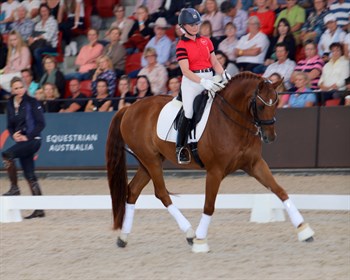
Alice Hurley and Bluefields Berlin working on activating the hind leg
© Roger Fitzhardinge
In the canter again it was about making the rhythm forward and back and improving the three beat rhythm, and the shoulder in to get the engagement, and riding him to the bit to give him the possibility to stay in front of the leg in a stabilised rhythm. “In canter to walk transitions, keep the rhythm in the collection and keep the rhythm. Keep the inside rein always a little higher than the outside one.”
In the flying changes it was important yet again to keep the horse straight with not too much flexion. In the pirouettes it’s about keeping the horse in front of the leg and turning the shoulders around the hind leg and in the double bridle, to keep him to the snaffle rein. “It’s important to ride forward and reaching to both reins, and when he feels behind the leg, hands down and then motivate him with your leg.”
As soon as he was picked up, Dorothee instructed “Straight away motivate him in the canter forward and back to get the forward feeling, and then with the hips help him with the rhythm.” Again in the flying changes it was important that he didn’t show too much flexion. Many transitions within and between the paces, and always motivating him to encourage the hind leg energy.
This lesson was very interesting and Dorothee simply said that the exercises for the higher levels are all about the basics and the straightness, and the realisation of encouraging an active hindleg. To do that you have to have a straight horse, and that is what it is all about to get a confident horse. This confidence involves a balanced horse and that’s created through straightness. Simple, easily understood exercises, but Dorothee has an amazing eye and sees any lack of balance and knows what to do at that moment to put the horse back in balance.
A break for an hour, some fabulous food and wine, and on returning it was a thrill to see the fabulous chestnut Quincy B by Quarterback, ridden by Jayden Brown and owned by Terry Snow.
Again it was exactly the same message as with the other horses. Exactly the same!
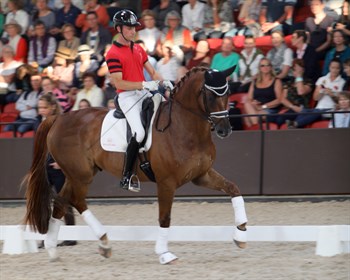
Terry Snow’s Quincy B by Quaterback, ridden by Jayden Brown, was seriously impressive
© Roger Fitzhardinge
Riding forward to the bridle and this horse is seriously impressive, but for Dorothee it’s simply another horse going through the same principles. Taking the outside rein and the inside leg. It was more about taking the inside hind towards the outside rein and to manage the poll between both reins. What needed to improve was that the front end could be a little longer and that the hind legs need to be a little more under and from the hind leg to the bit.
Now it was into the canter walk transitions and the same as with the others, often encouraging Jayden to get Quincy to stretch to the bridle and take the neck longer and then at that moment getting the hind leg to be more engaged. Jayden showed easily this ability in Quincy.
Dorothee was often focused on helping the horse to keep the rhythm with the rider’s hip. Always stabilising the horse in the preparation for any movement, help with the rider’s hips, in the rhythm and ride forward to the bit.
Dorothee was for the first time very complimentary about this horse, stating how safe he looked in all the 6 year old work, and so it was on to working on some collected work in the canter. The work for the collection in the canter was on a small circle and then travers and hold the rhythm with the hips and then ride forward. The horse collects very well because this horse is well established in all the basics – as a consequence the work was understandably wonderful. Very good changes, always well balanced and straight after the change and stabilised.
Dorothee says “For 6 years he is very very good.” At the end of the sessions, there were some transitions to get the horse to the quicker shorter steps in the trot before walk. To end, again there was stretching in the trot and the sideways hands if he didn’t want to stretch, and it’s time for the final horse.
The last horse of the day is the big brown imported Senator Nymphenburg, by Nymphenburg for Jenny Gehrke. The warm up is exactly the same, with attention to the transitions and the straightness, riding to the bit from behind and keeping the rhythm and the hips to the reins. It was then on to improving the trot by making the hind leg a little quicker by closing him from the back legs to the bridle. When he gets a little deep, Dorothee asks Jenny to bring him up in front with the snaffle reins and keep him to the bridle, keeping the ears up in front of the rider. Keeping the wrists mobile is important, as he doesn’t need to be allowed to sit in the bridle with too strong a contact.
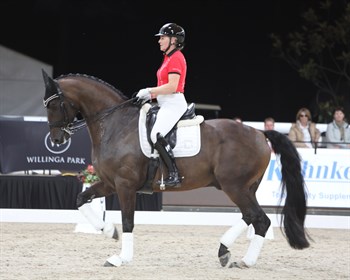
The experienced partnership of Jenny Gehrke and Senator Nymphenburg
© Roger Fitzhardinge
In the canter pirouettes, focus was on making certain that the horse was responsive to the inside leg to balance the horse for the departure from the pirouette. Always forward and back transitions to refresh the pace, re-establish the activity and collection in a good rhythm, and improve the rhythm with the hips.
Forward and back in the canter, and then a small circle to get the balance and collection. “In the one tempi changes and twos keep the rhythm and the straightness, and again don’t let him get strong in the bridle by having mobile wrists.” There was some good piaffe and passage and transitions, and Jenny was very happy as she always is with this talented horse.
Dorothee brought home yet again that the well being of the horse and the ability for him to do the grand prix work depends on developing the horse’s body and strength, and that can only be done through consistent training developing the balance. This is all about the basics and the correct way of riding the horse to the bit.
It was interesting to see that it was the principle was the same for all horses, no matter the age. But as they get better trained, the degree of difficulty within the horse’s ability and strength gets more demanding, but never pushing too hard and not for long periods, and always with rewarding and then stretching to the bit breaks.
Dorothee was simplistic and with an amazing eye that knew the feel and what needed to be done to make that feeling better and the horse stronger supple balanced and more at ease. It was a great evening.
READ THE LATEST NEWS ARTICLES HERE

